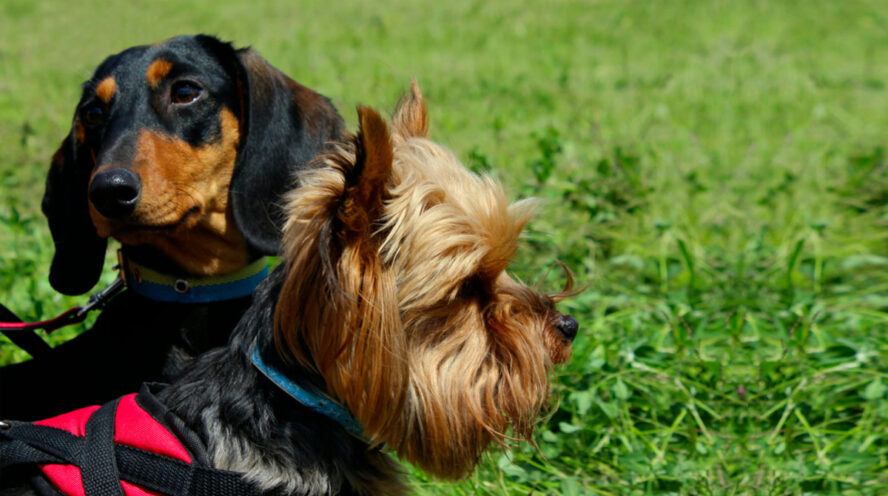Firstly, don’t get confused by the term ‘non-shedding dog breeds‘! In reality, every dog sheds to a certain degree. However, non-shedding dog breeds are those breeds that shed only a small portion of their hairs compared to other dogs.
Most breed experts recommend non-shedding dog breeds to people that want neat animals in their home, or if they are allergenic to dogs.
Dog dander can be indeed problematic to owners who are allergic to it. By inhaling the flakes from a dog’s skin, the pet owner exposes himself to a range of allergic reactions, that can be acute and even result in anaphylactic shock.
Also, it’s essential to know that although most of these dogs are technically hypoallergenic, you might still develop an allergy to them.
There is no 100% non-shedding, or hypoallergenic dogs unless they are furless.
In this elaborate read, we have thrown light on a list of non-shedding dog breeds (or more accurately, low-shedding dog breeds) in the world. We classified them by sizes (small, medium, and large non-shedding breeds).
Ready? Let’s proceed.
List of non-shedding dog breeds
As stated in the introduction, what we regard as a non-shedding dog breed might be something of a misnomer. These canines do actually belong to low-shedding kinds.
They shed so little amount of hair that you may hardly notice their shedding! Before we categorise non-shedding dog breeds into different sizes, here is an indiscriminate list of all of them found in the world.
Small dogs:
- Dachshund
- Australian Terrier
- Affenpinscher
- Lhasa Apso
- Shih Tzu
- Bichon Frise
- Chinese Crested
- Maltese Terrier
- Australian Silky Terrier
- Cairn Terrier
- West Highland White Terrier
- Maltese
- The Miniature Poodle
- Mini Schnauzer
- Moodle
- Scottish Terrier
- Welsh Terrier
- Yorkshire Terrier
Medium size dogs:
- Tibetan Terrier
- Brussels Griffon
- Soft-coated Wheaten Terrier
- Whippet
- The Italian Greyhound
- Lowchen
- Portuguese Water Dog
- Havanese
- Kerry Blue Terrier
- Lakeland Terrier
- Irish Terrier
- Puli
- Petit Basset Griffon Vendeen
- The Standard Schnauzer
Large dogs:
- Giant Schnauzer
- Standard Mexican Hairless
- Airedale Terrier
- Irish Terrier
- Saluki
- Wirehaired Pointing Griffon
- Komodor
- Bouvres de Flanders
- Irish water spaniel
Best small non-shedding dog breeds
Having to clean dog hairs from the couch, your clothes, car seat, or the floor can be tiring. A small dog that doesn’t shed should bring relief if you’re allergic to dog hairs and get a fit of runny nose and itchy eyes each time you come in contact with it.
Small dogs are cute pets and if you want a hypoallergenic one, here are some of the best non-shedding dog breeds of miniature sizes.
Small non-shedding breeds
Dachshund

This one is our favourite 
Dachshunds originated from Germany and were initially used as hunting dogs. The short-legged hunter dog exists in three different groups categorised by its coat – longhaired, wire-haired, and shorthaired. Each of these categories does shed to a small degree.
If you want to find out more about weiner dogs shedding and hypoallergenic properties, please read our detailed articles on “Do dachshunds shed,” “Are dachshunds hypoallergenic.”
Affenpinscher
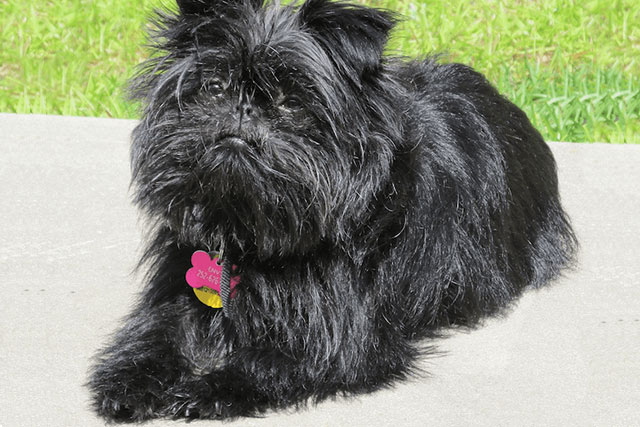
In German, Affenpinscher means a ‘monkey-like terrier.’ This cute toy breed is one of the oldest of its kind.
The Affenpinscher is very courageous and doesn’t back down from a challenge. It can also be overprotective of its loved ones. Its character is more prominent than its size.
On the positive side, the Affenpinscher sheds little, making it a neat companion. Its wiry fur should be brushed at least twice a month, or clipped once every few months.
Lhasa Apso
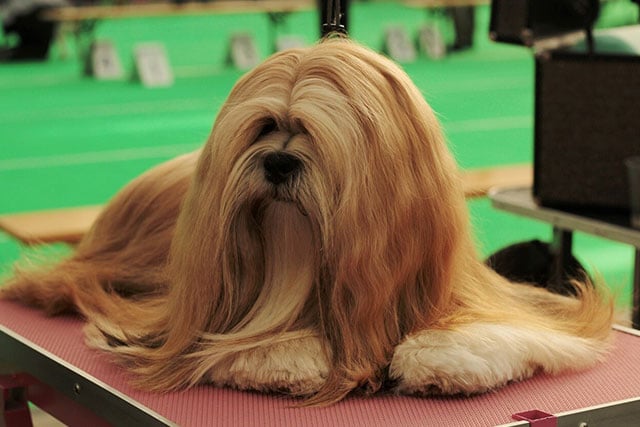
It is incredible how the Lhasa Apso breed has a low-shedding capability considering the way its thick fur flows to the ground. The smallish dog can also be groomed to make its dense silk stay off the ground.
Shih Tzu
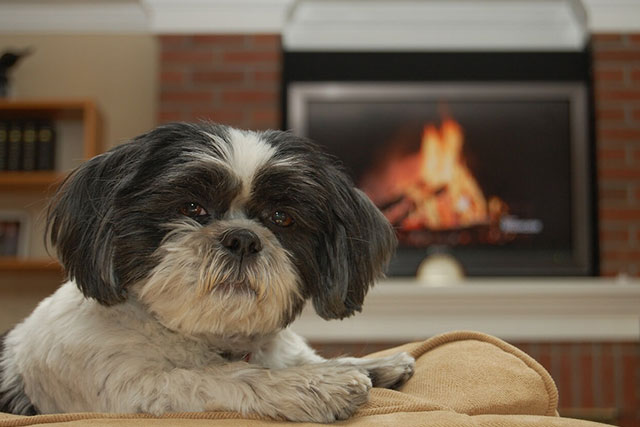
The Chinese took the credit for inventing this beautiful, thick-furred, hypoallergenic dog breed. It also has its place in the list of some of the oldest dog breeds in the world.
The name ‘Shih Tzu’ means ‘lion dog’ in Chinese, but this cutie’s appearance isn’t anywhere close to the lion’s. Despite having been around since the 7th century and having ties with the Ming Dynasty, the Shih Tzu is one of the easiest dogs to breed.
You wouldn’t need to worry about shedding as Shih Tzu drops very few hairs despite its overflowing coat. However, clipping the hairs once in a couple of months is an excellent idea.
Bichon Frise
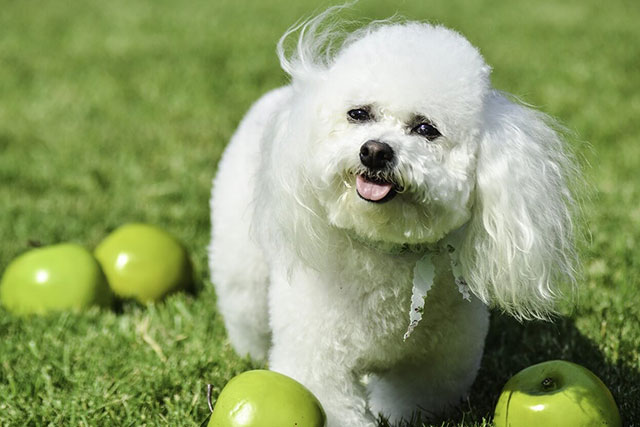
The Bichon Frise is a popular dog breed, especially in France where people get it for shows or companionship. The dog keeps winning hearts with its thick, fluffy white fur and short legs.
To point out, the Bichon is the perfect pet for people with allergies. It is capable of non-shedding and only needs to be brushed occasionally or clipped once its fur overgrows.
West Highland White Terrier
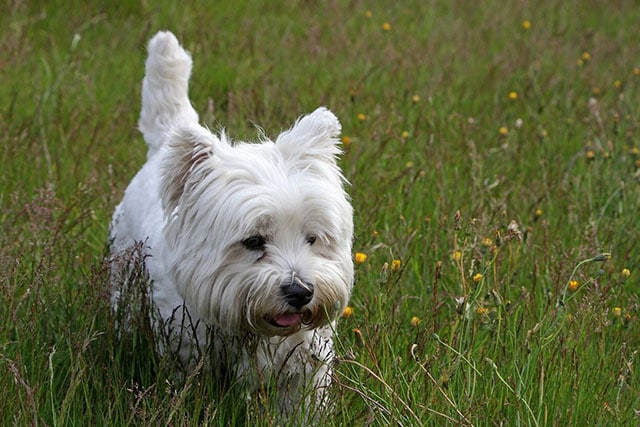
This smallish and hypoallergenic dog breed was originally bred in Scotland. People call this breed ‘Westie,’ and it was bred to hunt rodents. Its smooth white fur is a strong point in its unusual appearance.
The ‘westie’ is a high-in-demand indoor dog. It has a pure white coat and long fur which is incredibly hypoallergenic and non-shedding.
In other words, it is a perfect breed for low-cost maintenance and a loyal companion. Brushing its fur a few times every week and clipping them at least once in 2 months will help it to keep looking stunning.
Chinese Crested
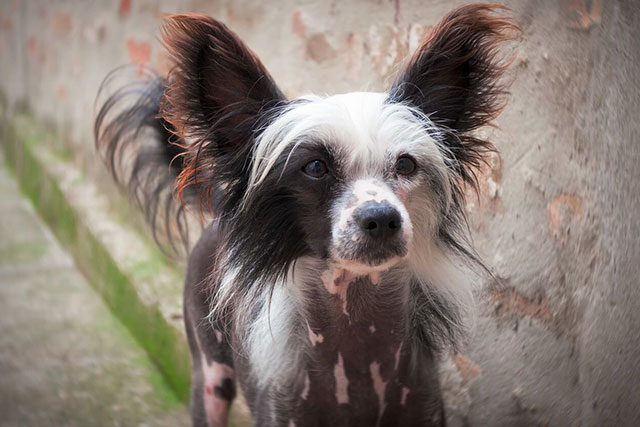
This breed came to life when the Chinese discovered the ‘African hairless terrier.’ They had to breed the dog to become way smaller and then use it as a pet.
The gentle and well-mannered dog is almost hairless, and there is a zero percent chance of shedding – what will it moult anyways?
Because of its hairlessness, the Chinese Crested often needs to be worn a sweater or T-shirt during winter and summer periods respectively.
The best way to help your dachshund live longer?
Watch our video to find out!
The Miniature Poodle
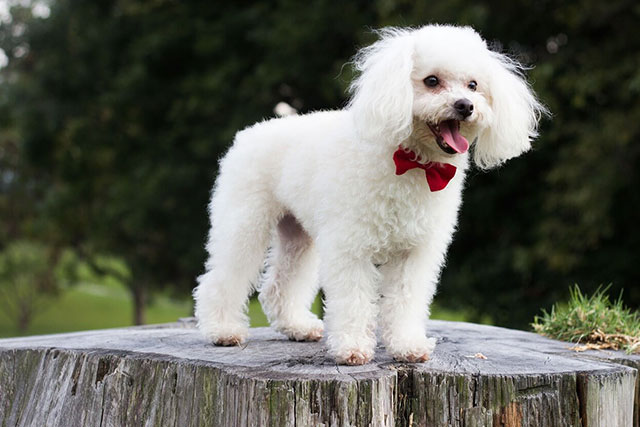
Bred as a change from the normal-sized poodle, this fur-covered small dog is pure glory with its exotic coat and variety of colors. The standard-sized poodle also finds its way into the hypoallergenic breeds.
Moodle
The name almost gives this breed away. It was obtained by mixing Maltese and Poodle genes. This toy dog is popularly called ‘Maltipoo’ in some countries.
Non-shedding Terriers
Maltese Terrier
Talking about cuteness, and the Maltese Terrier is nothing short of it – it is small, white, furry with dark, with passionate eyes.
The Maltese lapdog doesn’t need much maintenance and is best for people who want a hypoallergenic dog. Clipping of its long fur once they overgrow is all that is necessary.
Australian Terrier
The ‘Aussie’ terrier is one of the smallest breeds of the terrier family. A thick coat of fur adorns its long head, triangular, erect ears, and sturdy short body. Also, this dog’s passionate deep brown eyes will win any heart.
Australian silky terrier
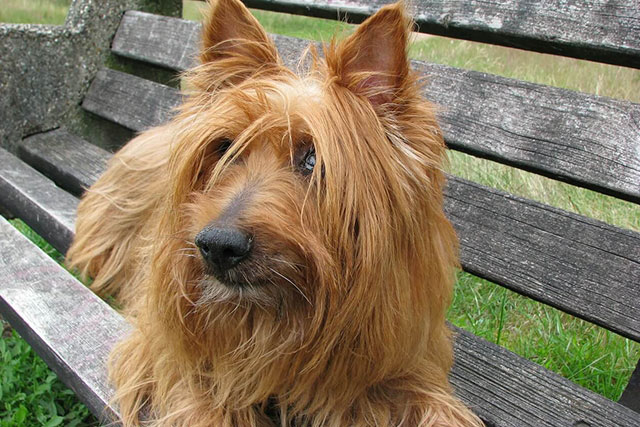
Originally from Great Britain but bred in Australia, the silky terrier is a small dog – with an all silk overflowing fur.
To clarify, Silky Terrier is a result of crossing Yorkshire Terrier with Australian Terrier.
This cute breed has a lively personality and doesn’t require a lot of activity due to its body makeup. This type of terrier doesn’t cause its owners any allergies since there wouldn’t be any need to worry about shedding.
The only grooming recommendation is clipping regularly and brushing a few times a week.
Cairn Terrier
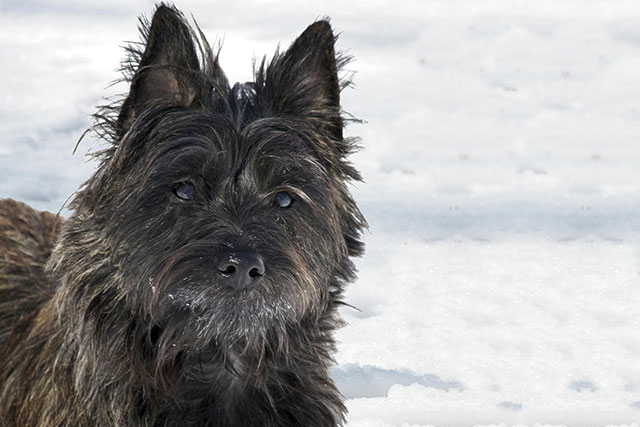
In any debate about which terrier breed is the oldest, this dog always pops up. The little man hails from the Scottish Islands where the first breeders used it as a ‘work’ dog.
Maltese
Maltese connoisseurs call it the ‘ultimate lap dog.‘ This beautiful dog breed is smallish and lively with a dense white fur that flows to the ground. Granted its thickness, the fur has to be groomed and sometimes shaved. The dog also has a stark black nose and deep dark eyes.
Mini Schnauzer
The mini Schnauzer is a rather small dog for the amount of energy and personality it possesses. The non-shedding doggie has a long thick fur. The medium-sized Schnauzer is also a hypoallergenic breed.
Scottish Terrier
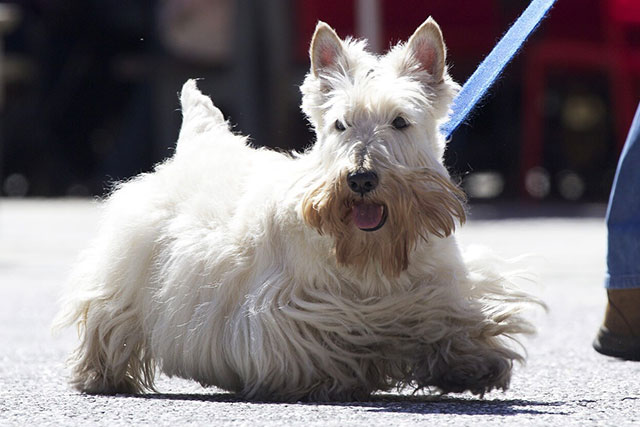
This breed shares the same characteristics as the dachshunds – intelligent, independent, and smart. However, they have been in existence for more than a century, with highland terriers believed to be their ancestors. The dog is also short and non-shedding (low-shedding).
Welsh Terrier
The ‘Welshie’ or Welsh terrier is arguably the oldest terrier of the UK breeds that people still fancy till date. It is very much similar to the Airedale in appearance and is often small to mid-sized.
Yorkshire Terrier
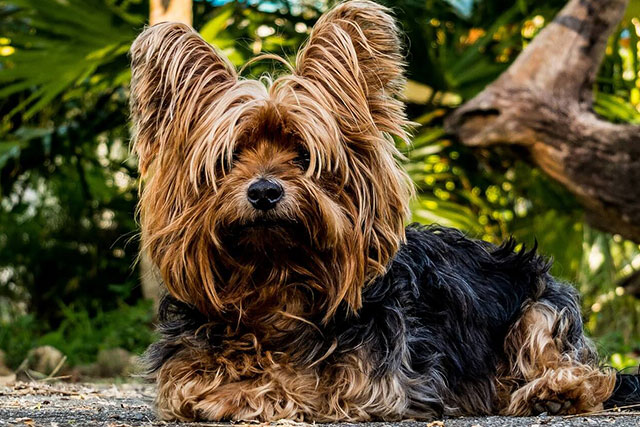
The ‘Yorkie’ is smallish with a long silky fur. Its name Yorkshire is probably an attestation to where this dog was first bred in Northern England – Yorkshire. The toy-sized dog is also hypoallergenic.
Non-shedding medium dog breeds
Just like with the large and small dogs, there are medium-sized non-shedding dog breeds that are popular. However, for the scope of this article, we are going to cover only some of the best low or non-shedding dog breeds in this category.
Non-shedding medium size breeds
Tibetan Terrier
The Tibetan terrier is not in fact a terrier. However, it does resemble the terrier, so he has been given the name on account of its resemblance to the terrier breed. It was originated in Tibet. This midsized breed is one of the most hypoallergenic dog breeds known to man, despite its vast fur coat.
Brussels Griffon
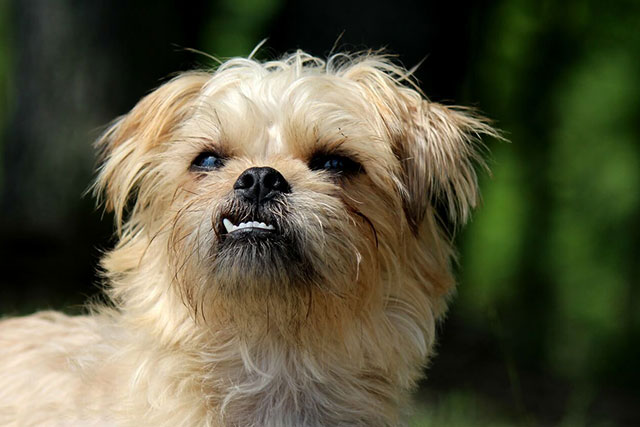
This hypoallergenic breed is popular in Europe where it is popularly called ‘Griffon Bruxellois.’ The initial purpose of this dog was to kill rats. It is a sturdy dog with thick fur. The long-haired Griffon’s coat must be hand-stripped, which helps to maintain the coat’s texture and minimise shedding.
Soft-coated Wheaten Terrier
The soft coated wheaten terrier is famous because of its unique coating. The mid-sized breed is a hypoallergenic dog that is mostly kept as a pet.
Whippet
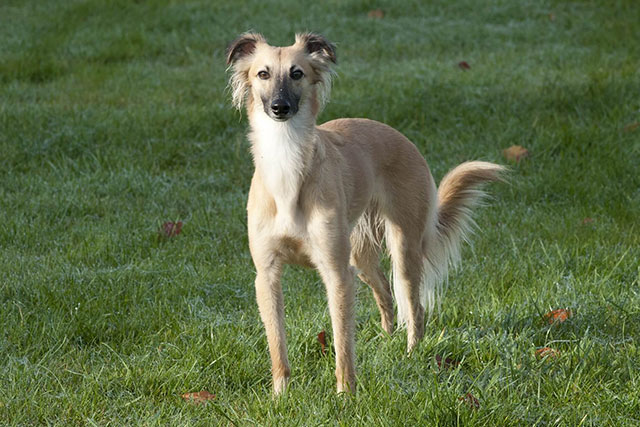
Firstly, don’t mistake this breed for the Greyhound as many do! The whippet is a sighthound, with a short coat and an athletic, medium-sized build. This long-limbed breed is also hypoallergenic.
The Italian Greyhound
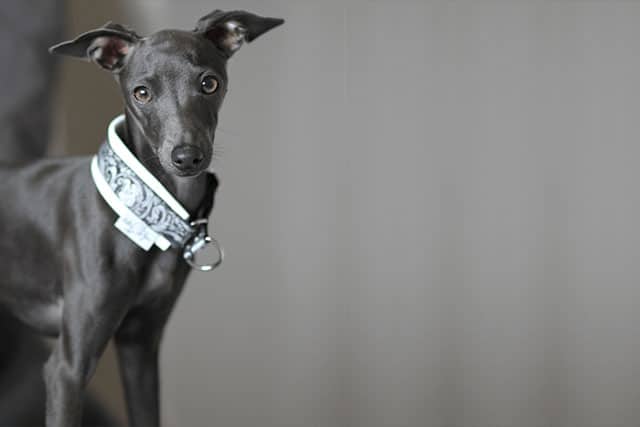
A careless glance at this breed and you would think the Italian Greyhound is a whippet. However, the main difference between them is that the whippet is much bigger than the Italian Greyhound.
Lowchen
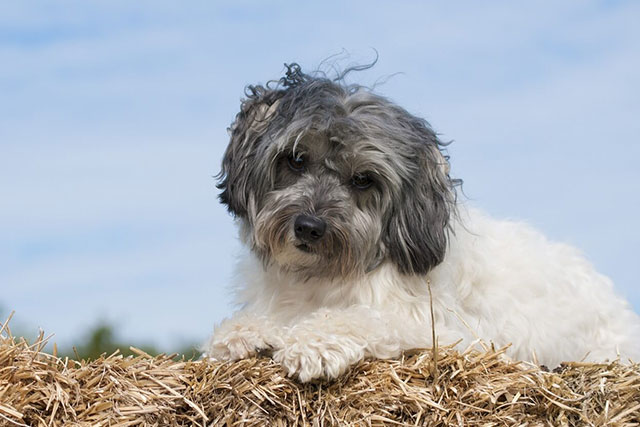
The main theory is that Lowchen originated from Europe, however many breed experts are pointing to France. Lowchen is one of the rarest breeds of dogs in the world. Only a few hundred are in the world today. In the 1970s, there were only about 65 registered Lowchen breeds in the world.
Besides being rare, this breed is amongst the lowest shedding dog breeds in the world. Despite having a huge mane-like coat, it is neat and drops off less dander. It only requires hair grooming and clipping occasionally.
Portuguese Water Dog
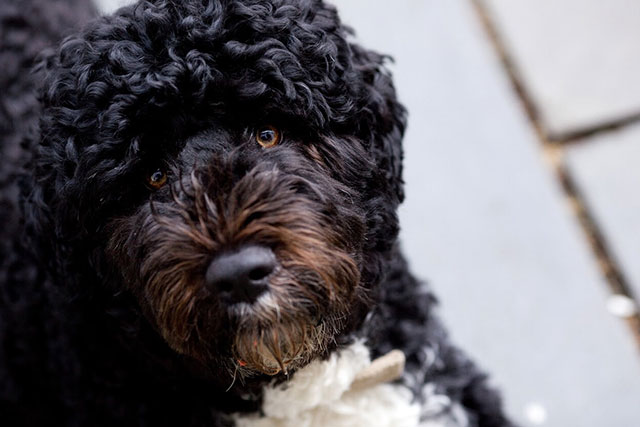
The ‘Portie,’ or the Portuguese water dog, is a hypoallergenic breed with a thick, curly coat. Its original purpose was to herd fish into the nets, hence its love for water. It is a medium-sized doggie and can be an excellent companion to any family member.
Havanese
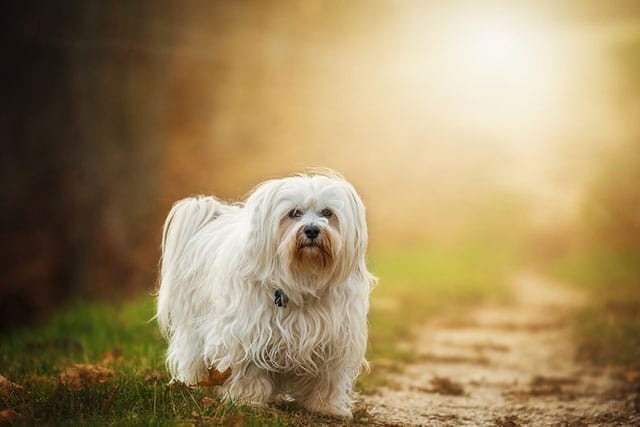
The Havanese dog is one of the most affectionate companions a man can get. It used to be bred mostly for entertainment, and it’s one of the most low-shedding dog breeds in the world. Many owners prefer to clip its hair short.
Other low shedding medium-sized dog breeds include:
- Kerry blue terrier
- Lakeland terrier
- Puli
- Petit basset Griffon Vendeen
- The standard Schnauzer
Non-shedding large dog breeds
Despite their large size, the dogs listed below shed little to no hair. Let’s have a look at each of them in detail.
Non-shedding large size breeds
Giant Schnauzer
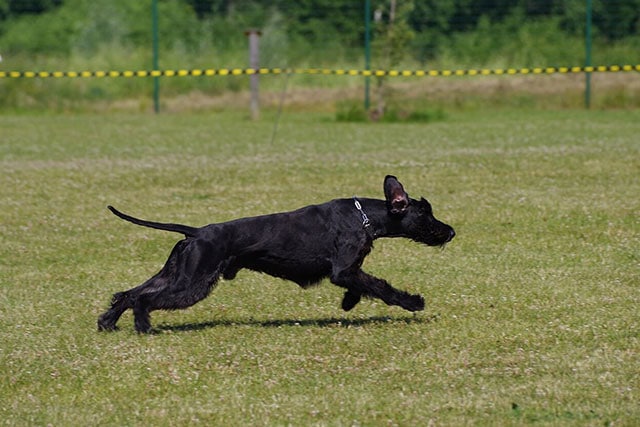
If you prefer larger dogs with non-shedding properties, the giant Schnauzer is a great option. Almost all the different Schnauzer sizes are low-shedding, and it’s more of a genetic factor.
Standard Mexican Hairless
The standard Mexican hairless is a large breed that has no hair – as its name implies. The big-eared and curious doggie is indeed an excellent option if you want them clean and hypoallergenic.
Airedale Terrier
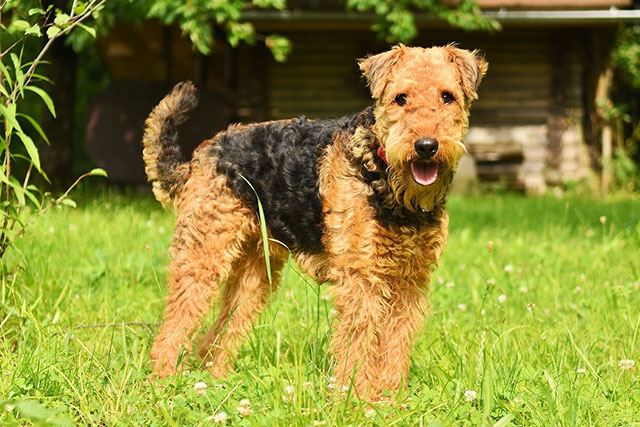
The Airedale Terrier is a large non-shedding dog breed. In fact, it’s the biggest breed of the terrier family. This sturdy, tall dog is decorated with a large covering of fur.
The original Airedale was supposed to be used for hunting small animals. However, time and necessity made it essential to have larger breeds of this dog, and the Airedale terrier came to be. The military and many hunters use this dog for tracking and large game hunting, respectively.
Irish Terrier
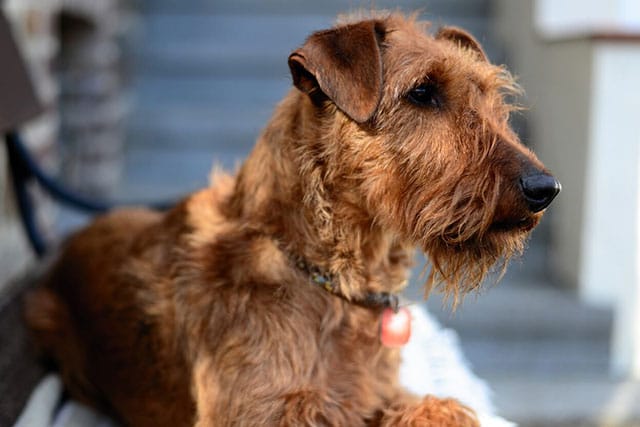
A handsome dog, this is one of the classic representatives of the terrier breed. What people love most about Irish Terrier is its ability to adapt to life anywhere, plus it has some good furry coat that sheds very little.
Other large dog breeds that don’t shed include:
- Saluki
- Wire-haired pointing griffon
- Komodor
- Bouvres de Flanders
- Irish water spaniel
Conclusion
For most dog owners, having a neat, non-shedding pooch is a dream come true. Dog hairs and dander can be messy, and sometimes harmful to humans. Dog’s dander, – the flaky skin that falls off their bodies when dogs shake it off, is the cause of the allergic reactions for some people.
It means a dog with a high shedding characteristic is bound to have a substantially higher amount of dander falling off its body.
Also, a high shedding dog would drop hairs anywhere – in the car, on your clothes, body, couch, etc.
As mentioned before, dog dander dissipates into the air and gets into our noses or eyes, causing itches, red eyes, allergies, etc.
Therefore, it becomes expedient to have a dog that doesn’t shed – or in reality, sheds very little.
The dog breeds mentioned above are the best bet if you’re considering non-shedding (low-shedding) dogs. They will generally require only hair grooming and occasional clipping of overgrown hairs.
Finally, whatever size of dog you prefer, a little research into its hair-shedding characteristics is all that is needed to pick a dog that is right for you.


